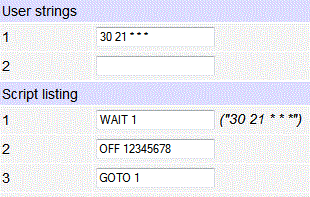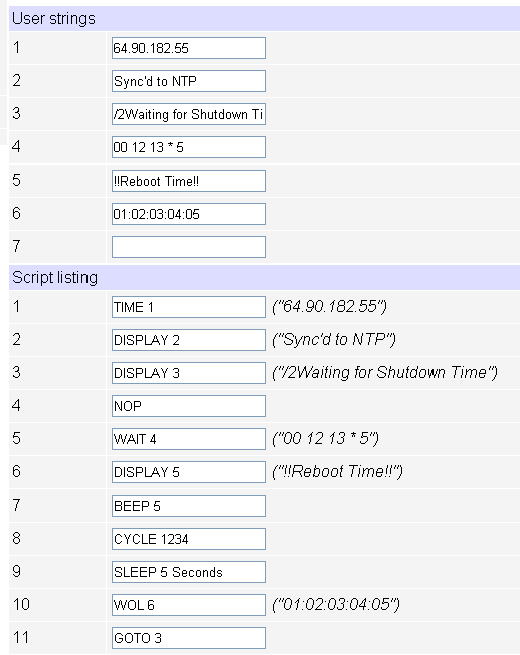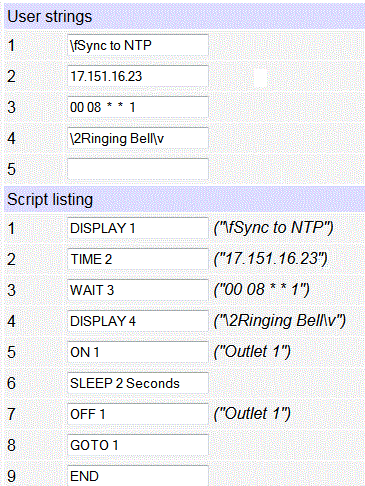Scheduling Events with Scripts
Firmware versions 1.6.0 and later support scheduling through a BASIC scripting language. Have a look at the examples below. Need some help? Call (408) 330-5599 or send an email.Hardware Requirements - EEPROM
User-defined scripts are stored in non-volatile EEPROM. The current Web Power Switch 7, DIN Relay II/IIII, 110-240V Power Switch and Ethernet Power Controller 5 include expanded EEPROM. Scripting can be used on earlier models (ie. Web Power Switch III or VPDU) with small EEPROM, but they will be lost after power-off. Scripting is included in the latest firmware.
Real Time Clock (RTC) - Helpful but not required.
You don't need an RTC with battery backup to schedule events. You can synchronize the internal clock in any product to a Network Time Protocall server source using the NTP command. The advantage of a battery-backed-up RTC is that its time setting will survive both a loss of power and a simultaneous loss of network connectivity. The current Web Power Switch, Ethernet Power Controller and 110-240V Power Switch include a battery-backed-up RTC.
Setting it up
Feel free to read the scripting page for a quick overview of the BASIC script language. Log in as admin and click the scripting link. After entering a command on each line, press <return> and the command will be copied. If there's a syntax error in the command, the screen will refresh without changes. After you've entered a script, check the "Enable Scripting" checkbox. Once enabled, start the script using the RUN button or any other method described on the scripting page. Have a look at these example scripts:
Simple Lighting Economizer

This simple program shuts the lights off at 21:30 (9:30PM) daily. Users can turn them
on using a web browser, iphone,
android phone, etc.
Should they forget to turn them off, the
web power switch takes
care of it. One customer controls hotel HVAC equipment similarly using
a DIN relay.
Reboot a Server Periodically

This example reboots a file server every Friday the 13th at noon. Line 1, the TIME command synchronizes the internal clock to an NTP server located at 64.90.182.55. Line 5 uses the WAIT command to select the reboot time. Line 10 uses the WOL command to wake the device at MAC address 01:02:03:04:05 by transmitting a WOL "magic packet".
Ring School Bells at 8AM on Mondays

In this example (derived from an actual customer use), a DIN Relay is used to ring a school bell every Monday at exactly 8AM. The DIN relay first syncs to a public time server, then it waits until 08:00 on a Monday. After that, it rings the bell attached to relay 1 for a few seconds.